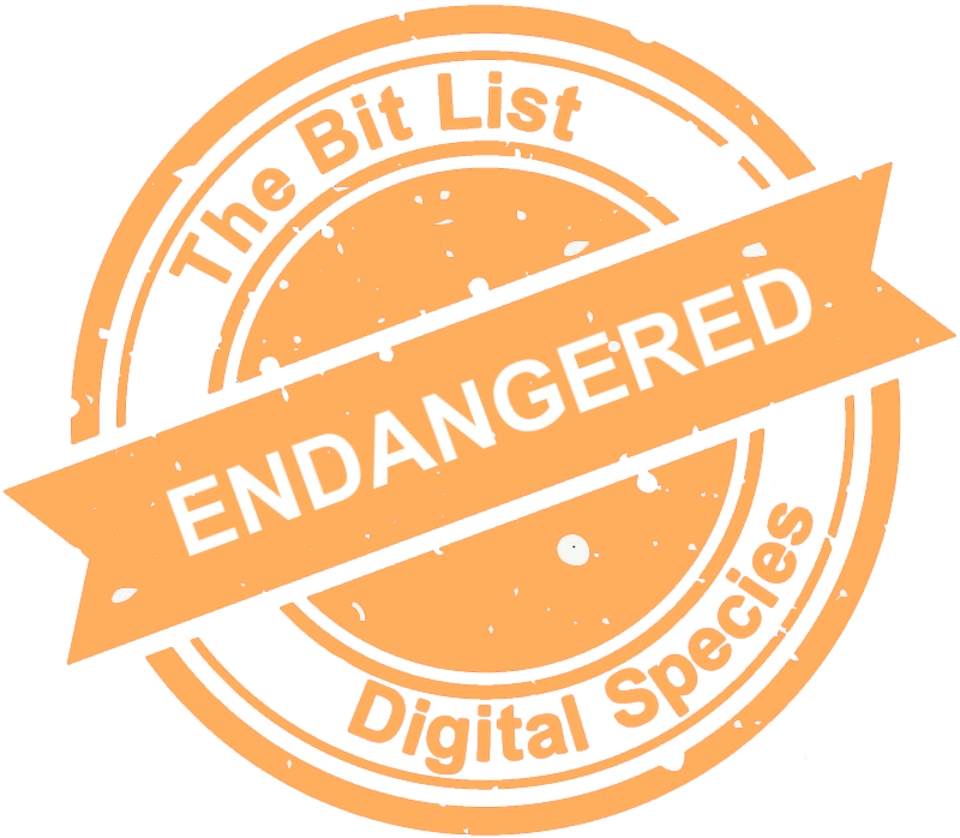Oral Histories
|
|
 |
|
|
Oral histories including both audio and audiovisual (video and sound), and their accompanying transcripts and/or time-pointed summaries. |
||
|
Digital Species: Museum and Gallery, Community Archives, Sound and Vision |
Trend in 2024:
|
Consensus Decision |
|
Added to List: 2019 Rescoped: 2023 |
New Rescoped Entry |
|
|
Imminence of Action Action is recommended within five years, detailed assessment within three years. |
Significance of Loss The loss of tools, data or services within this group would impact on many people and sectors. |
Effort to Preserve | Inevitability It would require a small effort to preserve materials in this group, requiring the application of proven tools and techniques. |
|
Examples Examples are wide ranging but can generally include born-digital or digitized material produced as an output of oral history projects; video or oral histories; transcripts, summaries, and other accompanying materials. |
||
|
‘Critically Endangered’ in the Presence of Aggravating Conditions Poor documentation; external dependencies; storage on old or degrading media; storage on consumer portable media; lack of preservation planning; lack of sustained funding; lack of ongoing investment in changing preservation requirements; lack of capability; poor documentation; dependence on small staff or volunteer resources; lack of standardized file naming; uncertainty over IPR or the presence of orphaned works. |
||
|
‘Vulnerable’ in the Presence of Good Practice Preservation capability; high quality storage; meticulous and consistent replication; stored in a trusted repository; preservation requirement understood; intellectual property managed to enable preservation; good descriptive cataloguing; persistent identifiers. |
||
|
2023 Review This entry was added in 2019 under ‘Digital Materials in Museums and Galleries’ and previously rescoped in 2021 to ‘Supporting Digital Materials for Museums and Galleries’. The 2023 Bit List Council superseded the entry, splitting it into six more discrete entries as the scope of the single entry was too broad to provide the guidance needed. The recommendation to break this entry down was also made by the 2021 Jury, as the types of digital collections content in museums can be vast and offer particular risks in museum and gallery contexts. Approaches to preservation are dependent on whether these oral history recordings are on analogue and digital portable media (e.g., external hard disk drives, audio or video tapes), or are in a somewhat managed networked environment. If held on portable media, guidance for portable media should be followed. They agreed with the 2021 Jury Review recommendations that Museum & Gallery entries require further rescoping. In regards to this entry, the 2023 Council recommended a review and rescope of Oral Histories and Research Materials and Outputs due to overlaps/cross referencing which, due to time constraints, was unable to be done for the 2023 review cycle. |
||
|
2024 Interim Review The 2024 Council identified a trend towards even greater risk, in light of increased Imminence of Action from five years to less than three years and given the context of Deadline 2025, for museums and galleries that have oral history recordings on physical media (tapes, reels etc.). It is critical that museums take their Oral History collections seriously and put in place plans for digitisation. The Council recommend that in 2025, the full review considers whether in light of Deadline 2025, if the museums and galleries have not started (or who have made minimal progress towards) digitising audiovisual recordings (and whether the balance between oral histories as born-digital and those remaining on physical format carriers justifies this) if the classification might be raised to Critically Endangered. They also note how have discovered over the past year that there are a lot more audiovisual recordings that while they have been referred to as oral histories, do not quite fit the format of an oral history recording, and are instead better classified as an interview. With this in mind, they recommend that the 2025 review consider a possible cross-species review with Research Outputs, and whether scope could slightly change to ‘Oral Histories and Audiovisual Interviews’ or something that is more inclusive. |
||
|
Additional Comments There may be a need for clarifying what falls under oral histories in the context of preservation at the organization - whether it includes audio and/or video recordings recorded for the purposes of creating oral history recordings (to be added to an organization’s collection), or for internal-only use. In addition, there may be some misidentification of oral history recordings, where the intent may have been to capture the recording as a research interview or as vox pops. See also:
|
||









































































































































